The history of the Canadian Army parallels that of Canada itself. What started as a small Confederation-era militia was built into a respected force of mostly citizen soldiers for the First and Second World Wars. From the Korean War to United Nations peacekeeping to Afghanistan and Latvia — despite limited resources and sometimes ill-defined missions — Canada's now largely professional army has served with distinction around the globe.

Militia Actions 1867–90s
One of the Canadian government's first concerns at Confederation in 1867 was to establish a home defence force for the small nation of only 3.5 million people. The greatest threat to the new country came from the south — the United States — with its population of 36 million. The Militia Act of 1868 (see Militia Acts) created a sedentary militia of all men aged 16–60. This force only existed on paper but was supplemented in peacetime by an active militia, whose soldiers trained for 8 to 16 days a year.
Shortly after the Militia Act was passed, the new country was put to the test during the 1869–70 Red River Resistance (also known as the Red River Rebellion). At the centre of the dispute was the failure of the Canadian government to negotiate with the Métis when it purchased Rupert’s Land from the Hudson’s Bay Company. Fearing loss of their land and culture, the Métis prevented government surveyors from entering the colony and formed a provisional government under Louis Riel.
Following the execution of an English-speaking settler who opposed the provisional government (see Thomas Scott), Canada quickly dispatched a force of British soldiers and Canadian militia to the Red River Colony. Before the army arrived in August 1870, Riel and his lieutenants fled to the United States and the provisional government collapsed, all without bloodshed. Underlying tensions remained, however, and the treatment of Métis landowners led to another dispute in 1885 (see discussion of the North-West Resistance below).
In 1870, more than 13,000 militiamen volunteered to guard Canada’s borders against a threatened attack by Irish-Americans known as the Fenians. The Fenians hoped to aid the cause of Irish independence from the British by drawing imperial forces to North America to protect Canada. Their attacks failed, and by 1871, Britain was instead finalizing the withdrawal of its last garrisons in Canada, leaving the militia to defend the country.
In March 1885, more than 6,000 men volunteered to quell the North-West Resistance (also know as the North-West Rebellion), an uprising of Métis and First Nations people on the Prairies. The North-West Field Force sent by Ottawa to subdue the rebellion was commanded overall by British Major-General Frederick Middleton; aside from a few other British staff officers, the force was Canadian. These part-time soldiers were untrained and poorly equipped but enthusiastic, and they made their way quickly to the West on the newly completed sections of the Canadian Pacific Railway.

Part of the column commanded by Middleton was stopped temporarily by the Métis at Fish Creek on 24 April before it could resume the advance. After successfully relieving besieged Battleford, Canadian Lieutenant-Colonel William Otter’s column was forced to withdraw by Chief Pitikwahanapiwiyin (Poundmaker) at Cut Knife Hill on 2 May. Middleton won the final battle at Batoche on 12 May, prompting the surrender of Louis Riel and other rebel leaders. Overall, the militia suffered casualties of 26 dead and 103 wounded in its first major campaign. From their Métis and First Nations adversaries, militiamen learned the value of mounted-rifle tactics and staying well hidden in trenches or firing pits. Otter became a hero back home in Ontario.
The North-West Resistance was the first time Canadian female nurses performed military duties. Seven nursing sisters were contracted to tend wounded and sick soldiers in Moose Jaw and Saskatoon, although the nurses were civilians and did not wear military uniforms.

South African (Boer) War
In 1899, William Otter commanded the First Contingent sent to fight the Boer republics in South Africa — Canada’s first overseas war. Despite resistance in much of French Canada to sending troops to fight for Britain in an imperial war, Prime Minister Wilfrid Laurier compromised by sending an infantry battalion of 1,000 volunteers. Canada would pay the costs to enlist, equip and transport these soldiers to South Africa, while Britain committed to paying all expenses after their arrival. Laurier emphasized that this was not to be considered a precedent that committed Canadian troops to a fighting role in all future British wars. Three more contingents were raised to serve in South Africa, bringing the total Canadian enlistments to more than 8,000. Lord Strathcona, Canada’s high commissioner to London, also personally financed a unit of 600 mounted riflemen, which would later become a part of Canada’s permanent force as the Lord Strathcona’s Horse (Royal Canadians).
Canadian nursing sisters also served during the war, this time as uniformed officers in the army. Four nurses accompanied each of the First and Second Contingents, while eight nurses were with the Third Contingent. Four of them were on their second tour of duty in South Africa. Army nurses have served in all of Canada’s overseas conflicts since that time.
Canadian units were kept together in South Africa rather than being broken up to reinforce British units, marking the beginning of a national tradition for Canadian forces, who considered this unity of effort an essential foundation for their esprit de corps and fighting skill. Conditions in the hot South African climate were horrendous, Boer riflemen deadly efficient, and disease rampant. Eighty-nine Canadians died in battle, 252 were wounded and 135 died of disease. When the war ended in Britain's favour, the Canadians returned to a nation filled with pride for the Empire and the troops. (See Battle of Paardeberg.)
Pride of accomplishment in South Africa boosted public support for a volunteer army. Frederick Borden, Laurier’s minister of militia, introduced the Militia Act of 1904 to implement key reforms, including the creation of a militia council headed by a Canadian senior officer who would hold the highest military post of chief of the general staff. Amid a growing sense of Canadian nationalism, there remained a devotion to the Empire that would soon become the driving force behind Canada’s involvement in an all-consuming world war.
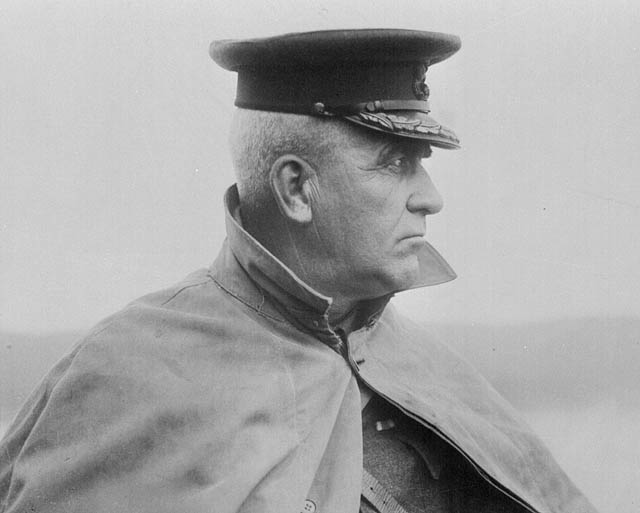
First World War
Mobilization
In 1868, Canada’s military budget stood at $1.6 million; by 1914, under Prime Minister Robert Borden, it increased to $11 million, providing a first-line militia strength of 74,213 men and a permanent force of 3,110. When Britain declared war on Germany on 4 August 1914, Canada was, automatically, also at war.
Colonel Sam Hughes, a strong militia advocate and Borden’s minister of militia and defence, sprang into action. He ignored the mobilization plans set in place by his staff, considering these too slow and cumbersome to be effective in a war that many expected would be over by Christmas. Instead, Hughes contacted regimental commanding officers directly, instructing them to enlist volunteers as quickly as possible and make their way to a new training camp under construction at Valcartier, Quebec. Within weeks, more than 30,000 soldiers had been mobilized and equipped; they embarked for Britain as the First Contingent (formally the 1st Canadian Division) of the Canadian Expeditionary Force (CEF). Early recruits came primarily from the cities, and 70 per cent of the first contingent was British-born.
Ypres
British Lieutenant-General E.A.H. Alderson commanded the Canadian Division, which saw its first major action at the Second Battle of Ypres in 1915, where the Canadians established their reputation as resourceful, determined fighters — the troops standing firm in the face of the first German chlorine-gas attack of the war. They successfully defended the Ypres salient while nearby allied troops fled before the horrifying impact of the previously unused chemical weapons.
A second contingent arrived on the Western Front soon after, which enabled the creation of the Canadian Corps. Hughes and his generals were determined that Canadian units would once again stay together at the front. British Lieutenant General E.A.H. Alderson commanded the Canadian Corps, while Canadian Major Generals Arthur Currie and Richard Turner commanded the First and Second Divisions. The addition of Third and Fourth Divisions under Major-Generals Malcolm Mercer and David Watson in 1916 brought the Corps up to a strength of 70,000, but casualties were mounting at an alarming rate. Units of new recruits arriving from Canada were broken up to reinforce existing battle-experienced battalions. The Canadian Corps developed a strong sense of national pride, especially since its divisions stayed together, unlike British divisions that were transferred from corps to corps on a regular basis.
During the war, many Black Canadians wanted to serve their country but faced prejudice typical of the time. As a result of extensive lobbying, No. 2 Construction Battalion was formed in July 1916. It consisted of Black men and white officers, except for the unit chaplain, William Andrew White, who was one of the few Black officers in the British Empire. Due to recruiting problems, the unit was downsized to a company. It served in the Jura Mountains of southeast France from May 1917, where it supported companies of the Canadian Forestry Corps in logging operations. Another 300 to 500 Black men served in other CEF units. (See Black Volunteers in the Canadian Expeditionary Force.)
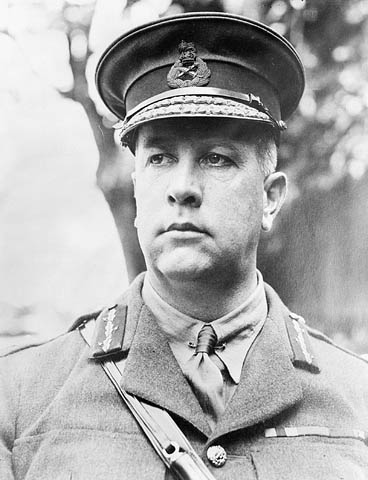
Vimy and the Hundred Days
Although Sam Hughes was the public face of Canada’s war effort for the first two years of the conflict, it was Arthur Currie who emerged as Canada’s hero following the victory at Vimy Ridge on 9 April 1917. Currie, under the overall command of British Lieutenant General Julian Byng, had directed the efforts of four Canadian divisions in an innovative, intricately planned attack on the Vimy heights, previously unattainable by British and French forces. Currie had joined the CEF from the militia, as had many of his officers, and they evolved into a professional, efficient overseas force. In June, Currie replaced Byng as commander of the Canadian Corps — becoming its first Canadian commander. He continued to insist that its divisions remain grouped together throughout the bitter fighting of 1918, including the Hundred Days campaign, where Canadians spearheaded the final Allied push toward victory and the armistice of November 1918. (See Battle of Amiens, Battle of Cambrai, Battle of Mons.)

Pride and Loss
By the end of the war, Canadian soldiers and the public alike knew they had created a special army with expertise gained through courage, adaptability, fighting skill and a unique spirit. They had incorporated the earlier traditions of the militia into the newly formed CEF that fought at Ypres, the Somme, Vimy Ridge, Passchendaele and the Hundred Days. Strengthened by tactical innovations and an imposing esprit de corps, the CEF had raised 619,636 soldiers. In all, 66,000 of these soldiers gave their lives and 173,000 were wounded in serving their nation and the British Empire. (See Evolution of Canada's Shock Troops.)
Following their return to Canada in 1919, most disbanded CEF soldiers returned to work as clerks, farmers, teachers, loggers, miners and factory workers. The permanent force once again stood at about 4,000, consisting of the Royal Canadian Dragoons (RCD), Lord Strathcona’s Horse (Royal Canadians) (LdSH (RC)), the Royal Canadian Regiment (RCR), Princess Patricia’s Canadian Light Infantry (PPCLI) and the Royal 22e Régiment (R22eR). The 40,000-strong militia remained a reserve component of the army. Exhausted by more than four years of the bitter, costly war of attrition from 1914–18, Canadians became isolationists and there was a loss of support for military spending.
Second World War
In September 1939, war broke out once again between the Allies and Germany. Canada prepared to stand at Britain’s side — but this time as an independent nation. The First Canadian Army was formed under Lieutenant General A.G.L. McNaughton. By 1942, it boasted three infantry divisions, plus two armoured divisions and two independent armoured brigades — most of the troops training and awaiting deployment from Britain.
Hong Kong and Dieppe
Except for two battalions sent to help in the failed defence of Hong Kong, Canadian Army units saw little action until the amphibious raid on Dieppe, on the coast of France on 19 August 1942. Of the 4,963 troops of the Second Division that landed on the Dieppe beaches, 907 died, 586 were wounded and 1,946 were taken prisoner. The horrendous casualty rate could find only small justification later in the war, when many of the mistakes of Dieppe were taken into account by Allied planners preparing for the invasion of Normandy.

Italy
In 1943, the First Canadian Infantry Division, along with First Canadian Army Tank Brigade, was finally thrown into action, in Italy. The Canadians advanced through Sicily with General Bernard Montgomery’s British Eighth Army and then began the long, difficult campaign up the Italian mainland. In early 1944, 5th Canadian Armoured Division joined 1st Division and the renamed 1st Canadian Armoured Brigade, allowing the formation of I Canadian Corps. While developing their expertise in the co-operation of infantry and armour, the 92,757 Canadians serving in this theatre fought successfully against the well-trained, heavily armed German forces.
From Sicily to the Moro River, Ortona, the Liri Valley, the Gothic and Rimini Lines, Montone and Senio, Canadian soldiers proved themselves in difficult terrain and costly battles that often favoured the well-entrenched German defenders. More than a quarter of the Canadian soldiers in Italy became casualties: 5,399 killed, 19,486 wounded and 1,004 taken prisoner.
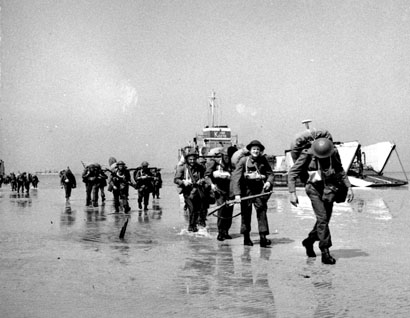
Normandy
On D-Day, 6 June 1944, the Allies invaded Normandy to begin the 11-month advance through France and northwest Europe into Germany. About 14,000 Canadian soldiers took part in the Allied landings across a 90-km front and troopers of the 1st Canadian Parachute Battalion jumped with the British on the eastern flank. After storming Juno Beach, Canadians advanced further inland on the first day of the invasion than either the British or American forces. D-Day was a pivotal success, but the cost for Canada was high — 359 killed in action, 715 wounded and 47 taken prisoner.
The Canadians’ success on D-Day, however, was followed the next month by a disaster in the advance toward Falaise, an offensive designed to cut off retreating elements of the German army. Canada’s Second and Third Divisions had been united into II Corps under Lieutenant General Guy Simonds only weeks before. During Operation Spring, on 25 July, the Canadians suffered some of their worst casualties in the war — the day’s losses being second only to those endured at Dieppe. Through the summer, amid difficult conditions, the First Canadian Army under General Harry Crerar continued to batter its way southward in the face of tenacious German resistance. The Allies finally captured what remained of German forces in northern France on 21 August, bringing the Normandy campaign to an end.

Channel Ports and the Rhine
As the Allies advanced eastward toward Germany, the Canadians were tasked with liberating the vital English Channel ports, including the Belgian city of Antwerp and the surrounding Scheldt Estuary. (See Liberation of the Netherlands and Battle of the Scheldt.) General Crerar would soon command the largest Canadian field army ever — more than 450,000 men — reinforced by Canadian forces who had been fighting in Italy, as well as other international units. In March 1945, Canadian soldiers, fighting alongside British and American forces, crossed the Rhine and would soon help achieve the final defeat of Hitler’s Third Reich.
Three-quarters of Canadian brigade commanders and 90 per cent of unit commanders had been militiamen before the war. Of the more than one million men and women in the armed services during the war, more than 730,000 served in the army — which suffered the loss of 22,910 killed, 52,679 wounded and 6,433 taken prisoner, a significant toll for a small nation of 11 million people. Like the Canadian Corps of 1918, the First Canadian Army of 1945 had become a professional, highly effective force with a solid military reputation.
Cold War and Peacekeeping
As it had in 1919, the Canadian Army dispersed rapidly after the Second World War. The remaining active and reserve forces were underfunded and ill-equipped in the early years of the Cold War that broke out between the American-led Western bloc and the Communist Eastern bloc, led by the Soviet Union. In 1949, Canada joined the North Atlantic Treaty Organization (NATO).
By that time, Canada had already entered its first United Nations (UN) peacekeeping mission in 1948 with its participation in the UN Truce Supervision Organization for Israeli and Arab territories. The Canadian Army’s peacekeeping tradition became firmly established the next year, observing the new demarcation line between India and Pakistan. In 1954, the army played a role in Indochina, supervising and controlling territories previously held by France.
Korean War
On 25 June 1950, Communist North Korea invaded South Korea. In February 1951, Canada sent the 2nd Battalion, PPCLI, to enter the frontline under command of the 27th British Infantry Brigade. Second battalions from the RCR and R22eR, along with an armoured squadron, an artillery regiment, a field engineer squadron and various support units, formed 25th Canadian Infantry Brigade Group and became part of 1st Commonwealth Division alongside two British brigades. Both groups sustained frequent casualties in sharp skirmishes and larger operations, often against highly skilled and heavily armed Chinese forces. During the war, several unit rotations took place, usually resulting in a year-long tour of duty in Korea.
With their expert use of machine guns, Bren guns, rocket launchers and mortars, the Canadians were immersed in a war to prevent the loss of South Korea. By the time the ceasefire of 27 July 1953 ended the fighting, Canada had lost 516 men (312 killed in action), while 1,202 were wounded and 32 taken prisoner. The 38th parallel was re-established as the border between the two Koreas, and the Canadian Army could take pride in its contribution to the containment of Communism (See Korean War and Battle of Kapyong).
Suez Crisis
Three of the infantry units that served in Korea were sent to join NATO forces in Europe and were later relieved by their 1st Battalions in 1955. World peace teetered in the balance once again during the Suez Crisis of 1956. Lester Pearson, Canada’s secretary of state for external affairs, helped to resolve the crisis by establishing the United Nations Emergency Force (UNEF) that included a contingent of more than one thousand Canadian soldiers — about one-sixth of the entire UN force. It preserved stability in the area for 10 years and was removed just before the outbreak of the Arab-Israeli war of 1967. Canadians formed the largest contingent of UNEF, and when Pearson won the 1957 Nobel Peace Prize for his role, Canada’s self-image as a peacekeeper nation was solidified.

Cyprus
In March 1964, Greece and Turkey were on the verge of war in a dispute over the Mediterranean island of Cyprus. Canadians formed a major part of the UN peacekeeping response, with all regular force infantry battalions and armoured and artillery regiments (the latter two reconfigured as infantry for the mission) eventually serving in Cyprus over a 29-year period. During the peacekeeping era, Canadians adopted American-pattern weapons, equipment, training methods and communications technology, replacing British patterns that had been the model for Canada’s army since the colonial era.
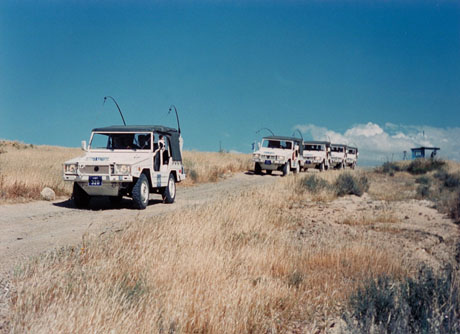
Unification, Reorganization and Cuts
In the mid-1960s, the Liberal government began the process to unify Canada’s separate services into a single force known as the Canadian Armed Forces (CAF). As a result, in 1965 the army became Mobile Command.
At about the same time, the CAF began to form additional French Language Units to encourage francophone recruiting and career opportunities. Starting in 1968, this led to the creation of what later became 5th Canadian Brigade Group (5 CMBG) as well as an armoured regiment, 12e Régiment blindé du Canada (12e RBC), an artillery regiment, 5e Régiment d’artillerie légère du Canada (5e RALC) and other brigade units.
The creation of these francophone units and a reduction in the size of the army meant the removal of several anglophone units from the Regular Army order of battle. Two armoured regiments and two infantry battalions reverted to reserve status, two became the third battalions of the RCR and the PPCLI, while a brigade headquarters and two infantry battalions were disbanded.
In 1969, the Canadian contingent to NATO was moved to Lahr, West Germany, where it served in close proximity to American forces. Cost-saving measures implemented by Defence Minister Paul Hellyer, such as unification of the army, air force and navy into a single service, proved unsuccessful due to a subsequent decline in military morale and a failure to bring about the desired savings. The Canadian Armed Forces now numbered less than 80,000, a severe drop from the 1963 level of 120,000. Canada’s NATO force was reduced by half, falling to 5,000 personnel.
However, Canada maintained its commitment to UN efforts, participating in every Cold War–era peacekeeping operation until 1989. Canadian troops helped maintain stability in India/Pakistan, Israel/Egypt, Iran/Iraq and Central America.
Post-Cold War
By the early 1990s, the Berlin Wall had been dismantled, East and West Germany were reunited, and the Soviet Union had dissolved. These events impacted the Canadian Army directly. They resulted in the disbandment of 4 Canadian Mechanized Brigade Group, which had been stationed in Germany since the early 1950s and the end of the Canadian Air-Sea Transportable (CAST) Brigade Group reinforcement mission to northern Norway.
As regional and ethnic conflicts proliferated, no longer held in check by the restraints of the Cold War, and as areas in conflict began to resist UN intervention, what had once been “peacekeeping” missions degenerated into more contentious “peacemaking” efforts.
Canadian forces played a limited role in the UN-sanctioned coalition against Iraq during the Gulf War of 1991, after its invasion of Kuwait.
The following year, during the vicious civil war in the former Yugoslavia, a contingent from the RCR and Royal 22e served with UNPROFOR in Sarajevo under the leadership of Major General Lewis MacKenzie — primarily securing the airport of the besieged city. There were too few UN soldiers in the area, and danger mounted as Serbs fired heavy guns from the surrounding heights into the city. MacKenzie remained a staunch supporter of UN peacekeeping but warned of worsening supply shortages for the mission and also of the difficulty of commanding a mission on the ground when many crucial decisions needed to be routed through UN headquarters in New York.
On 15–16 September 1993, an 875-person battle group in Croatia based on 2 PPCLI faced aggressive action from the Croatians. During the Battle of Medak Pocket, Canadian soldiers fought their most substantial battle since the Korean War. Four Canadians were wounded and as many as 27 Croatians were killed. The next year, Serbs took 400 peacekeepers hostage, including 55 Canadians.
UNPROFOR was followed by NATO authorized missions such as IFOR, SFOR and KFOR. About 40,000 Canadians served in the Balkans, most of them from the army. (See Canadian Peacekeepers in the Balkans.)
In the 1993 UN missions to Somalia and Rwanda, the impossibilities of maintaining effective control, discipline and morale with insufficient resources became even more apparent. In Somalia, the Canadian Airborne Regiment (CAR) became the subject of intense scrutiny when a Somali teenager was tortured and killed in the Canadian camp. The incident led to a long political inquiry in Canada and, ultimately, to the disbandment of what had been Canada's elite army regiment. (See Somalia Affair.)
In 1994, Canadian Major-General Roméo Dallaire, who commanded the UN mission in Rwanda, appealed for more troops to stop the Rwanda genocide but was powerless to halt the unfolding catastrophe.
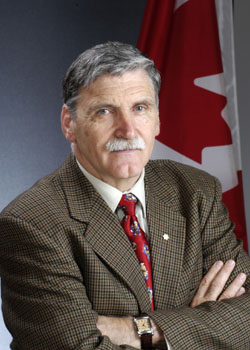
Canada has a long history of involvement in Haiti. Canadian peacekeepers served there on various missions in the mid-1990s and the mid-2000s to late 2010s. In addition, Canada provided substantial assistance to the island nation during the devastating earthquake of 2010. (See Canadian Peacekeepers in Haiti.)
Canadian soldiers have also participated in several smaller peacekeeping missions since the early 1990s. This includes Congo, Cambodia, East Timor, Ethiopia and Eritrea. In 75 years of peacekeeping missions, Canada has contributed about 125,000 service members and lost 130 of them — the price paid for a middle power’s efforts to help preserve world peace.
Afghanistan
Canada’s Regular Force army hit a low point of 19,700 in 2001. Attitudes toward the military, however, rebounded drastically after the 11 September 2001 terrorist attacks on New York and Washington, DC.
The 9/11 attacks, as they came to be called, resulted in a US-led international campaign in Afghanistan to oust the Taliban regime that had sheltered the al Qaeda terrorists. In Canada’s first war-fighting deployment since Korea, 900 soldiers from 3rd Battalion PPCLI were sent to Kandahar Airfield. In 2005, Canada also sent a reinforced battalion group of 2,000 troops to Kandahar. Soldiers faced small arms fire, rocket attacks, suicide bombers and deadly improvised explosive devices (IEDs). By 2010, Canada had 2,500 troops in Afghanistan fighting a full-scale counterterrorism mission, the nation’s largest commitment since the Korean War.
Canada’s combat role in Afghanistan officially came to an end in 2011. The death toll was 158 soldiers, two-thirds of whom were infantry, most of them killed in IED strikes. Among the casualties was Captain Nichola Goddard, an artillery officer who, in 2006, became the first Canadian female soldier to die in action.
Domestic Operations
Domestic operations consist of assistance to law enforcement, emergency response and prevention and the enforcement of Canadian sovereignty, especially in the North. The Canadian army has been involved in such missions for several years.
Over the decades, the military has often assisted with keeping order during periods of civil unrest, such as during the labour strikes of the 1920s and 1930s. During the 1970 October Crisis, thousands of troops were called out to patrol Ottawa, Montreal and other cities and to provide protection to several vital points across Quebec under the War Measures Act. The army also provided assistance during the 1990 Kanesatake Resistance (Oka Crisis), which contributed to the end of the standoff.
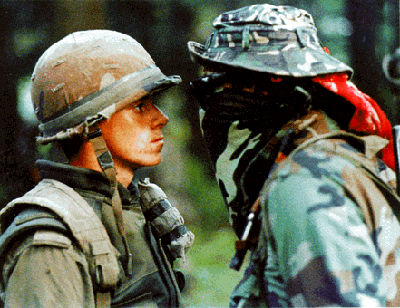
Other recent examples of the army’s assistance to law enforcement include the Vancouver Winter Olympics of 2010 and the G7 Summits of 2002, 2010 and 2018 in Alberta, Ontario and Quebec, respectively.
The army has also contributed personnel, equipment and expertise during emergencies and national disasters. The CAF name for its response to natural disasters is Operation Lentus. (See The Canadian Armed Forces and Natural Disasters.)
The army also responded to federal and provincial requests for assistance during the COVID-19 pandemic. Among other tasks, the army deployed medical specialists and other personnel to long-term care facilities in Ontario and Quebec and directly supported northern and remote communities, usually with the Canadian Rangers.
The North
The army has an important role in Northern Canada through the Canadian Rangers and Arctic Response Company Groups (ARCGs). The Canadian Rangers are a subcomponent of the Army Reserve, the members of which live and work in more than 200 communities in remote, isolated and coastal regions of Canada. Their role is to assist during emergency situations or domestic operations. The Rangers are divided into five Canadian Ranger Patrol Groups (CRPGs), each with a headquarters responsible for training and mentoring the Rangers and their youth program, the Junior Canadian Rangers. The Rangers have a presence in every Canadian province and territory except the three Maritime provinces.
The army maintains four Arctic Response Company Groups (ARCGs), one based on each division and manned by reservists. They are tasked with conducting sovereignty operations, helping with disaster response and assisting other government departments. The ARCGs train in the North on a regular basis.
Ukraine
In 2015, the CAF began Operation Unifier, a military training and capacity building mission in support of the Ukrainian armed forces. In 2023, the mission was extended to 2026. Training takes place in Britain, Poland and Latvia. The Canadian army provides most of the 300 CAF personnel who conduct recruit, armoured, combat engineer, combat medic, junior officer leadership and M777A2 howitzer maintenance training. Trained Ukrainians have increasingly taken over instructional duties, and CAF members have become advisors, mentors and course development guides.
Between the start of the Russian invasion of Ukraine in February 2022 and the end of 2023, Canada donated more than $2.4 billion in military equipment to the Ukrainian armed forces. Much of this came from Canadian army holdings, including eight Leopard 2A4 main battle tanks, four M777A2 155mm howitzers, 100 Carl Gustav 82mm antitank recoilless rifles, 4,200 M72 66mm antitank rocket launchers and 7,000 hand grenades. Many other donated items, ranging from winter clothing and equipment to small arms and ammunition, have come from army inventories, some in conjunction with commercial procurement.
Latvia
Operation Reassurance began in 2014; ten years later, it was the largest overseas mission of the CAF. The operation is part of NATO’s assurance and deterrence measures in central and eastern Europe. Between 2014 and 2017, the army provided soldiers on a rotational basis as part of Land Task Force-Poland. In June 2017, the army began its current contribution of a 1,700-person enhanced Forward Presence (eFP) battle group in Latvia. Canada commands the battle group and provides 540 of the soldiers. The battle group includes tanks, artillery, mechanized infantry, combat support, combat service support and electronic warfare elements from Canada and ten other NATO nations. The battle group is fully integrated into the Latvian Land Forces Mechanized Infantry Brigade. It is one of four original battle groups, with the others stationed in Poland, Lithuania and Estonia and led respectively by the United States, Germany and the United Kingdom. Four more battle groups have since been added, stationed in Bulgaria, Hungary, Romania and Slovakia and led respectively by Italy, Hungary, France and Spain.
In June 2022, Canada announced that its battle group in Latvia would transition to a Canadian-led brigade as part of Multinational Division-North (MND-N). To accomplish this, the brigade group would have to fill several important existing equipment shortfalls, including portable antitank missile systems, very short-range air defence weapons and counter uncrewed aerial systems. These capabilities have taken on renewed importance because of lessons learned from the Russian invasion of Ukraine.
In January 2023, the forward command element of the brigade group was deployed to Latvia to prepare for integration of the brigade into MND-N. Although the final composition of the brigade group has not been finalized (as of February 2024), it will consist of three battle groups, two of which will be provided by Canada and one by Denmark. One Canadian battlegroup will be stationed in Latvia on a six-month rotational basis and include tanks, artillery, mechanized infantry and a full range of combat support and combat service support elements. The other Canadian battle group will be a light infantry battalion provided from Canada on a surge basis for six-to-eight-week periods on intensive in-theatre training. The Canadian brigade group will reach full combat readiness by 2026.
The Army in 2024
The citizen soldiers of the 19th century militia, the volunteers and conscripts of the two world wars, and the celebrated peacekeepers of the late 20th century have been superseded by the soldiers of a modern professional army, one that returned from Afghanistan as a highly trained, technologically advanced force.
The Canadian Army today consists of a headquarters, four geographically based divisions, which are further divided into three regular force mechanized brigade groups and a combat service support brigade, 10 reserve force brigades and divisional support groups, as well as the Canadian Army Doctrine and Training Centre. (See Canadian Army Organization.)
As of early 2024, the army was made up of approximately 22,000 Regular Force soldiers, 20,000 reservists, 5,000 Canadian Rangers and 3,500 civilians. The army is about 6,000 personnel short of its authorized establishment, some 4,000 in the Army Reserve and 2,000 in the Regular Force.

 Share on Facebook
Share on Facebook Share on X
Share on X Share by Email
Share by Email Share on Google Classroom
Share on Google Classroom


